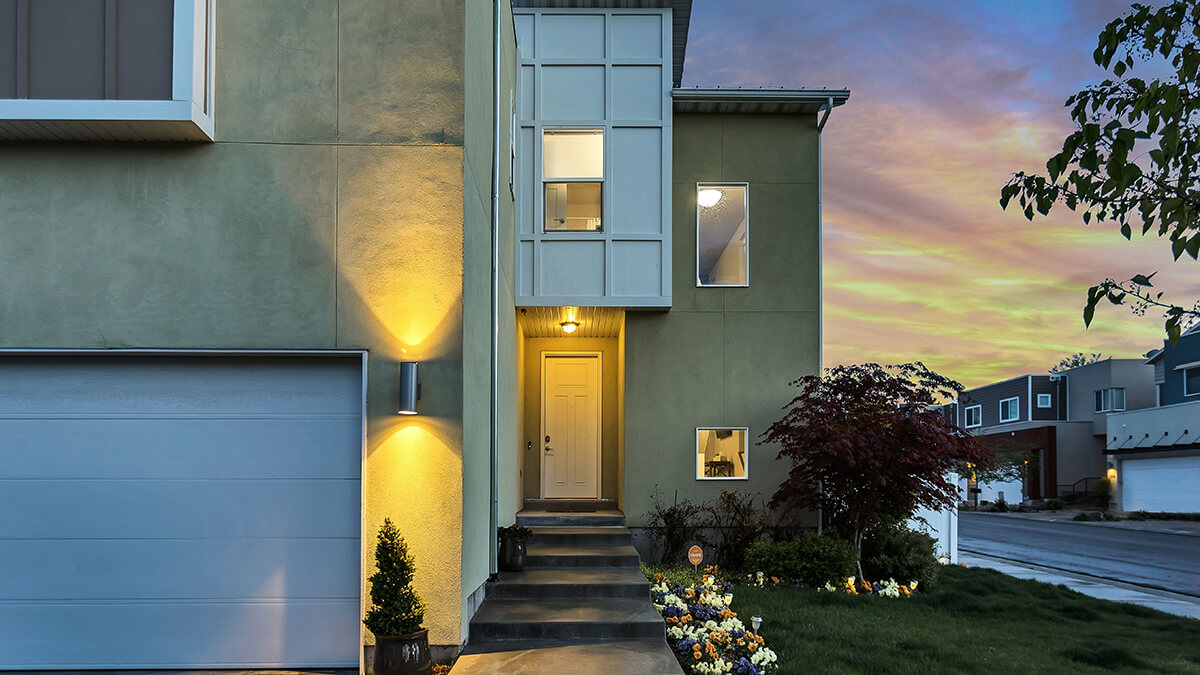The average retirement age in the U.S. is around 64 for men and 62 for women. To ensure financial stability during unpredictable economic conditions, diversifying income stream is essential. Rental income is one way to create consistent cash flow.
In this article, we’ll discuss how many rental properties you need to retire comfortably and what factors your success depends on, from desired retirement income to the return on your investments.
If you’re looking to sell a property quickly to reinvest in rental properties or other ventures, consider using iBuyer.com. We provide a streamlined selling process to ensure you can efficiently manage your assets.
Rental To Retirement
Compare Cash Offers from Top Home Buyers. Delivered by Your Local iBuyer Certified Specialist.
One Expert, Multiple Offers, No Obligation.
How Much Money Do I Need to Retire?
Before we look at how rental properties can keep you funded, it’s important to know just how many funds you’re going to need. Typically, the average retiree budgets for about 70% to 90% of their pre-retirement income.
However, this all really depends on how much you plan to be spending.
Some retirees spend their days relaxing at home, while others spend their days traveling It’s important to know what your expectations are for retirement and how much it may cost per year.
If you’re looking for a better estimate, you can use a retirement calculator.
Keep in mind that your number is probably going to be different than someone else. This difference is due to different spending habits, needs, wants, etc.
What Formula Can I Use for Rentals?
Before you start looking for the rental houses that you want to buy, it’s important to understand how much you’ll need to invest in rental properties. Investing in real estate does take a lot of funds, but it pays back those funds and more.
To figure out how much you should invest in rentals, you need to know two of the following three things:
- The amount you’re going to spend in retirement per year (M)
- The amount you’ve invested in real estate (I)
- The cash-on-cash return you’re making on your investment (C)
If you only have two of the variables, you can solve for the third one by using the following formula:
I x C = M
Mostly, you’re going to be using this formula to determine I, the amount you need to invest in real estate.
Let’s Look at a Few Examples
Let’s say that you’ve found properties that you can make a 10% cash-on-cash return with. With this information, we know that C=10%.
Let’s also say that you’ve gone to a retirement calculator and discovered that you’re going to need about $70,000 per year during retirement. This means that M=$70,000.
With these two variables, we can figure out how much you need to invest in retirement, I.
I x C = M
I x 10% = $70,000
I = $70,000/10%
I = $700,000
With this example, the retiree would need to invest $700,000 in real estate.
Let’s look at a more conservative example using the same income.
Perhaps, you want to plan for the worst. Let’s make C = 6% to account for bad seasons or overlying maintenance costs that you may have.
Let’s see how this changes the amount that you need to invest, keeping everything else the same.
I x C = M
I x 6% = $70,000
I = $70,000/6%
I = $1,166,667
This calculation shows you just how important every variable is in this equation.
You should also keep in mind that the equation is telling you the minimum amount you’d need to invest in these properties. In order to count for poor seasons, you should either lower your cash-on-cash return as we’ve done here or assume you’ll be spending more than a retirement calculator may have predicted.
How Much Debt Should I Use?
Some real estate gurus question whether or not they should be using debt to reach their real estate goals. As wit most things, there are pros and cons to both sides.
Let’s look at the advantages and disadvantages of either situation.
Making Use of Debt
The advantages of using debt to bolster your real estate portfolio are as follows:
- You’ll be able to buy houses faster because you’ll have secured the funds through a loan.
- You can buy higher quality houses (more expensive houses) with the availability of a loan.
- You could see rent appreciation if you’ve secured real estate in great locations.
The disadvantages of using debt to bolster your real estate portfolio are as follows:
- You’ll have to invest in more properties to see an increase in income.
- Financing all of those properties is going to be more difficult.
- You may be at more risk if a recession is to happen in the future.
Not Using Debt
The advantages of avoiding debt when buying real estate are as follows:
- You’ll have fewer properties to manage for the same amount of income.
- You’re less likely to be heavily affected by any recessions.
- You can also benefit from rent appreciation if your properties are strategically located.
The disadvantages of avoiding debt when buying real estate are as follows:
- You’ll have to spend more money out-of-pocket.
- You could take longer to reach your retirement goals.
Figuring How Much Debt You Should Use
Typically, real estate investors fall somewhere in between using and not using debt, meaning that they’ll take out loans for some properties while paying out-right for others.
Finding a healthy in-between can protect your portfolio from either scenario’s disadvantages. It’ll also allow you to take from both scenario’s advantages.
We also encourage you to take your ideal retirement age into account when preparing your portfolio. If you’re 20 years old, you may have time to invest in all of your properties out-right and save more money in the long-run by doing so.
However, if you’re 50 years old and wanting to retire in 5 years, you’ll need to consider using some debt to get you to your retirement goals faster.
The Steps to Developing Your Rental Portfolio
Now that you’ve figured out all of your underlying costs and investment needs, it’s time to actually start building your portfolio.
This is the part where you may want to have your financial information readily available to reference. You should also be prepared to make a spreadsheet or map out a few calculations.
Let’s take this step-by-step.
1. Figure Out How Much You’re Currently Spending
Figuring out what you currently spend is different than determining how much you should save for retirement. This step involves looking into your bank statements and spending habits rather than using a retirement calculator.
It may also be useful to consider what your ideal spending habits are as well. As we mentioned earlier, some couples travel during their retirement years. Therefore, those couples would need to have a greater income to supplement their traveling expenses.
For this step, it’s important to consult your bank statements, budgets, and other records of your spending habits. Be completely honest with yourself about what you’re currently spending and what you want to be spending.
It’s okay to shoot for $100,000 a year or even higher. You just need to know what your expenses will look like so that you can plan.
2. Adjust for Retirement
Make a bucket list or another kind of plan that you’re looking to complete during your retirement years.
What do you want to do? Where do you want to go? How much will all of this cost?
Make a spreadsheet with details about what the activity is how much you should save for it. This can help you determine your yearly costs when you place these expenses on top of your normal expenses.
As always, account for more money than you think you need. This will protect you during those months when you spend more than anticipated.
3. Account for Other Sources of Income
Don’t forget to include other sources of income in your spreadsheet. You may have other investments, a 401K, or another means of acquiring more income.
It’s important to diversify your retirement portfolio and make sure to sort your eggs among multiple baskets. Don’t try to keep all of your income isolated to one basket.
It’s actually smarter to diversify your portfolio and have to account for several different modes of income. This may sound more complicated, but it is better overall.
4. Create a Retirement Rental Property Profile
Now, it’s time to create your retirement rental property profile. Look into what kind(s) of houses you want to invest in and what your ideal investment house looks like.
Think about how many beds and bath you want, how expensive you want it to be, and what other details you want to account for.
This profile will serve as your way of determining whether or not a house is suitable according to your finances. Be sure to keep your finances in mind when you’re choosing the kinds of houses that you’re going to invest in.
Use this property profile when you’re looking for houses to invest in. You may also want to start deciding on some houses that are currently available for investment.
As you’re making this profile, you should anticipate any costs that may come with the house(s) that you’re looking at. If you’re looking at older homes, you should take into account maintenance costs and repair costs.
5. Do the Final Calculation
Once you determine all these variables, you can go back to our original equation:
I x C = M
Look at your ideal investment properties and determine how many investment properties of that type and price you’ll need to meet your investment goals.
As you’re calculating your final number, give yourself some room to breathe. You don’t want to undershoot the amount of money you’re planning to spend. If anything, overshoot and have too much money every month.
How Long Will It Take to Retire With Real Estate?
The answer is simply that it depends on what you’re doing now. How much you’re spending and how much you’re looking to invest in a short period of time also affects this answer.
As we mentioned earlier, your investment potential depends on your age. A 20-year-old and a 50-year-old will not have the same goals or plans when it comes to planning rental income for retirement.
We suggest that you look at when you want to retire and plan your investments from there. If you have 20 years before you want to retire, you can space out your investments over longer periods of time.
To be safe, we suggest that you give yourself at least five years to plan your real estate investments for retirement. You don’t want to take out a huge loan all at once or spend your entire savings account.
Give yourself time to set up a stable system that will keep you funded throughout your retired years. Don’t try to rush the process out of excitement.
If you’re on the younger side, you have two options. You can go ahead and set-up your rental homes now and make cash off of them early in order to potentially retire early or you can take your time setting up your properties if you feel you may become too overwhelmed with buying multiple properties at once.
If you’re on the older side, it’s best to make secure decisions with the understanding that you’re going to be more immediately impacted by those decisions. This means that you should be careful about what kind of money you’re going to drop on homes.
You may not want to take out loans, but this might be a better decision if you’re looking to make the most out of rental property income sooner rather than later.
Where Can I Learn More About Real Estate?
After reading about rental income for retirement, we know that you’re bursting with excitement. Buying rental properties and seeing that income fall into your bank account is riveting.
We also invite you to use our free home value estimator to look into pricing for these homes as you’re buying.




